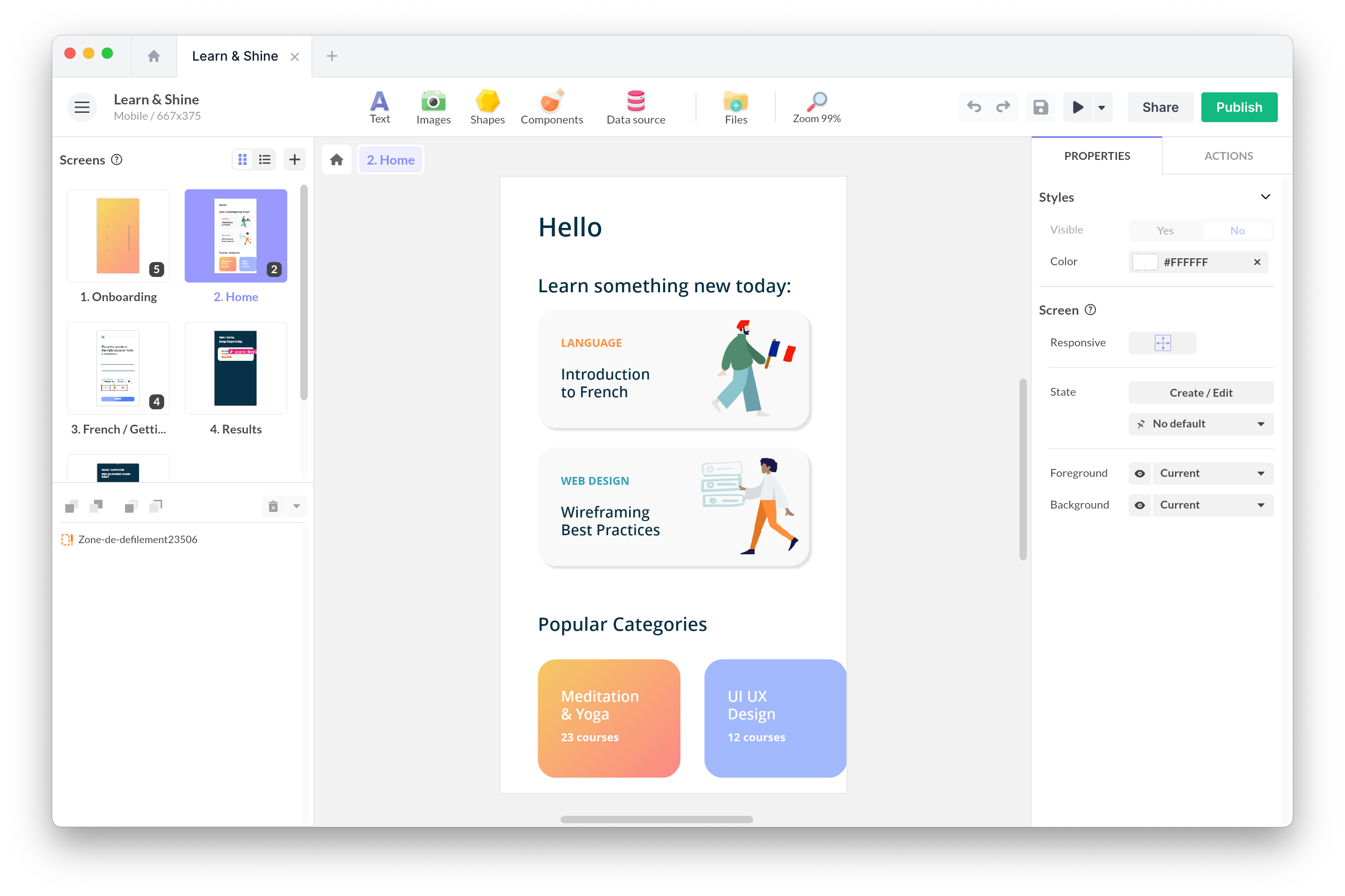Wed, Jul 31, 2024
Build an Engaging Interactive Map for Web or App

Some stories are best told through a map.
The Paris Olympics recently published this interactive map to help better understand traffic and movement restrictions related to the games. The Centre Georges Pompidou, on the other hand, offers an interactive map to locate artworks within the museum.

All sectors can benefit from this innovative and engaging format!
Long Live Interactive Maps!
Interactive maps allow you to represent complex data in an engaging format while giving users the power to personalize their experience.
Beyond just displaying data, an interactive map generally leverages a geographical representation to tell a story. It includes text and multimedia elements (images, videos, audio). The map can be based on a real or virtual territory.
The advantage of an interactive map is the ability to zoom, overlay multiple layers of information, and navigate through data. The user can choose to display or hide information as needed.

Interactive maps are widely used in education, particularly in history and geography. They are now being utilized in various industries such as tourism, industry, and real estate.
In the example below, discover how the Atlas of Rome has been transformed into an interactive and engaging format with multimedia interactive maps:
Recommended Tools
Here are some tools to create an interactive map:
Mapbox
Mapbox is a well-known map provider; it was used for the Olympic Games map mentioned earlier in this article! It offers numerous customization options for geographical map backgrounds.
OpenStreetMap
OpenStreetMap is an open-source alternative that provides free geographical data. It’s ideal for projects where data accuracy is crucial, such as in educational or community projects.
PandaSuite
This is the most flexible and creative tool! With PandaSuite, you can use any image as a map background, allowing you to represent real or imagined locations.
The numerous interactive features let you create pop-ups, popovers, add multimedia content, and control zoom and transition levels.
It’s the solution to create 100% custom interactive maps without needing to code.
Steps to Create an Interactive Map
An interactive map is composed of three elements: the map background, points of interest (or hotspots), and additional content (text, images, video, etc.).
- Define the Objective: Start by defining the goal of your interactive map. What do you want to show or tell? This will guide your choice of data, tool, and the structure of your map.
- Select the Data: Choose the data you want to display on your map: locations, points of interest, routes, geographical areas, etc. Please also specify if you want to manually integrate them on the map or dynamically from a data source.
- Customize the Appearance: Customize the design of your interactive map by choosing the style, colors, icons, fonts, and other design elements to match your brand or specific needs.
- Add Interactions: Create dynamic interactions by configuring specific actions (e.g., clicking on a point to display additional information). PandaSuite makes this step easy with its intuitive interface.
- Test and Publish: Before publishing your map, test it on different devices to ensure it works well everywhere. Once satisfied, publish your interactive map directly on your website, share it via a link, or export it as an application.



